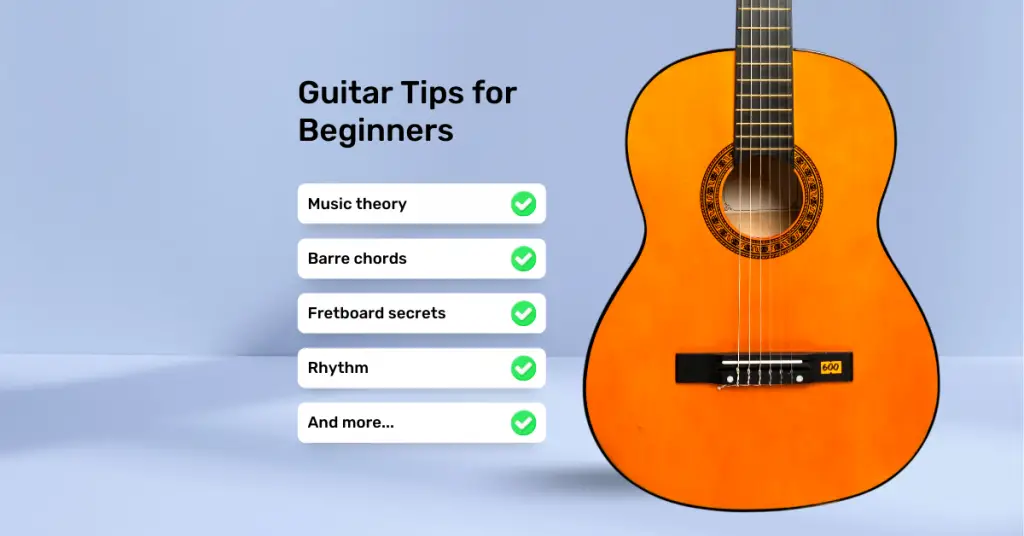Table of Contents
Your first experience with chord changes can be difficult. Especially since you desperately want to hear the sweet sound of a successful chord change.
Luckily, with a little bit of knowledge, you can become a chord changing pro!
There are several things to remember for chord changes, and they all have to be broken down.
With that being said, here are my top 5 tips to improve chord changes.
1. Stay close to the fretboard
The first thing you’ll want to pay attention to is how close your fingers stay to the fretboard when changing chords.
Plenty of beginner guitarists tend to pull their hands away from the fretboard during transitions, so get out of the habit as early as possible!
This doesn’t just apply to chord changes, either. This tip is useful for all aspects of left-hand guitar technique.
2. Don’t pause during transitions
You’ll master chord changes faster if you learn not to pause during transitions.
Doing this will force your brain to memorize a shape faster because it will be working harder to play and hear the proper chord.
Basically, keep moving!
Thinking ahead
You’ll need to learn how to think ahead if you want to get ahead of the game, and not pause during your transitions.
This starts with learning chord shapes, then chord progressions.
You can work on forcing your chord changes after that!
Put fingers down one at a time.
It’s okay if you place fingers one at a time when you’re first learning to transition.
This means you can place the rest of your fingers as you continue to play a section/measure.
It’s not a big deal if your chord is not fully formed for the first beat or two.
Just remember, your goal is to get chords changed, and this can start with one finger at a time!
3. Find similar fingers
When changing chords you can oftentimes find similarities from one chord to the next.
Take a look at the open C and D chords, for example.
You can see that fingers 2 and 3 stay on the same frets when transitioning. They just move to a different set of two strings.
This means that fingers 2 and 3 can maintain their form as you move from C to D!


You can also use inversions (other chord forms) to make chord changes easier. This means that you may want to use one type of chord shape over another when transitioning.
For example, It’s easier to transition from G Major to B Minor using the G Major’s Barre shape, rather than the G Major’s open shape.
This is due to the fast that the G Major barre shape using the same finger positioning as the B Minor barre shape.



Lastly, it’s important to use the same fingering for chord shapes and changes every time. This way you can build up muscle memory.
4. Learn chords on their own
Obviously chord changes are going to be more difficult if you don’t know your chords very well!
Start by practicing chord changes with your basic chords and basic progressions. You can move onto other chord changes from there.
Just remember, you don’t want to spread yourself too thin when learning something new!
5. Practice chord changes regularly
This might seem like a no-brainer, but it really is important!
Practicing chord changes for a short time period every day is better than doing it for a long period of time once or twice a week.
Practicing chord changes regularly will help you build muscle memory, which will be your best friend in the long run.
Regular practice will also teach you to relax the fretting hand, and continue to keep rhythm with the picking hand.
And lastly, regular chord change practice will help you learn to put your fingers down at the same time when moving to a new chord shape.
Guitar chord changes summary
Chord changes are really easy if you can get down these 5 simple tips!
Simply remember to:
- Stay close to the fretboard
- Quit pausing during transitions
- Look for similar fingers between chord shapes
- Master your chords all by themselves
- Practice regularly to build up muscle memory
And if you’re just getting started on guitar, make sure to check out this checklist of things every guitarist needs to know. That way you can make sure you’re on the right track!



